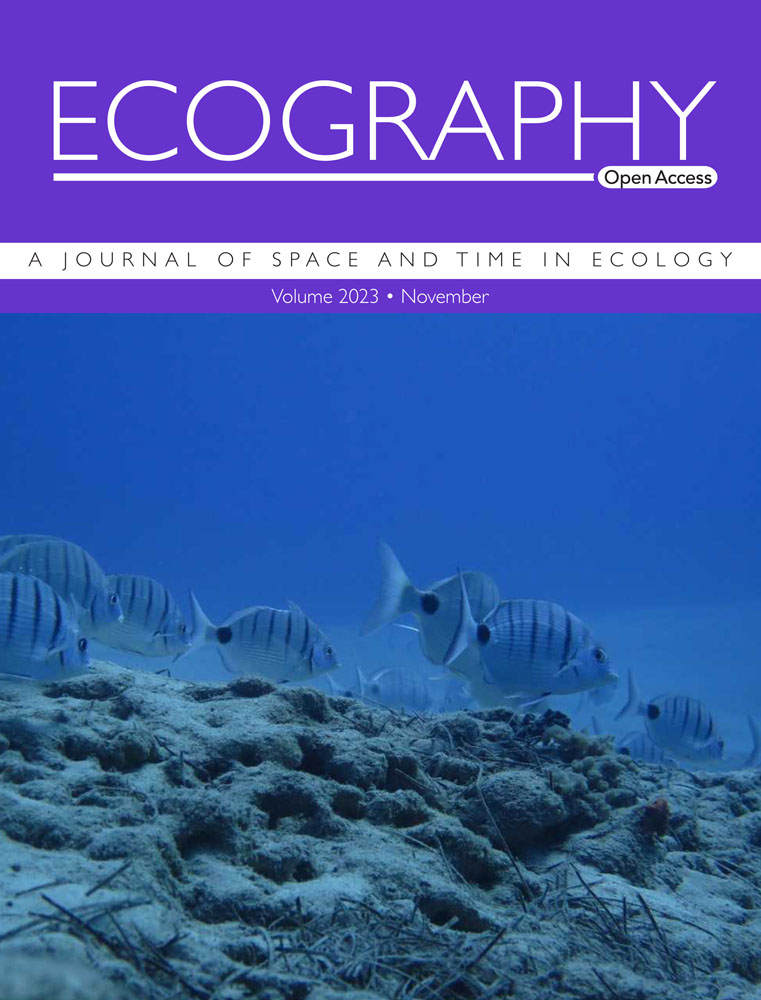跨尺度和组织层次的生态反馈整合
IF 5.4
1区 环境科学与生态学
Q1 BIODIVERSITY CONSERVATION
引用次数: 0
摘要
在生态系统中,物种以各种方式与其他物种及其当地环境相互作用。此外,生态系统在空间上通过不同类型的流动相互联系。从这些连接不同生态实体的纽带中,可以产生间接效应的循环路径:反馈回路。这就形成了一套嵌套的生态反馈,在生态系统的不同组织层次以及空间和时间尺度上发挥作用:生物体改变当地的非生物环境并受其影响,种群和群落内部的人口和行为反馈,以及发生在景观尺度上的空间反馈。在此,我们将回顾生态反馈如何在空间和时间上发生变化,并讨论它们产生的新特性,如物种共存或生态系统的空间异质性和稳定性。为了确定不同尺度的相似性,我们确定了可以改变反馈回路的符号和强度的非生物和生物调节因子,并表明这些反馈可以在空间或时间上相互作用。我们的综述表明,尽管作用的尺度不同,产生的过程也不同,但反馈会在不同组织层次上产生类似的生态系统宏观特性。最终,我们的贡献强调了整合这些反馈的必要性,以提高我们对它们对生态系统的动态、模式和稳定性的共同影响的理解。本文章由计算机程序翻译,如有差异,请以英文原文为准。
Integrating ecological feedbacks across scales and levels of organization
In ecosystems, species interact in various ways with other species, and with their local environment. In addition, ecosystems are coupled in space by diverse types of flows. From these links connecting different ecological entities can emerge circular pathways of indirect effects: feedback loops. This contributes to creating a nested set of ecological feedbacks operating at different organizational levels as well as spatial and temporal scales in ecological systems: organisms modifying and being affected by their local abiotic environment, demographic and behavioral feedbacks within populations and communities, and spatial feedbacks occurring at the landscape scale. Here, we review how ecological feedbacks vary in space and time, and discuss the emergent properties they generate such as species coexistence or the spatial heterogeneity and stability of ecological systems. With the aim of identifying similarities across scales, we identify the abiotic and biotic modulators that can change the sign and strength of feedback loops and show that these feedbacks can interact in space or time. Our review shows that despite acting at different scales and emerging from different processes, feedbacks generate similar macroscopic properties of ecological systems across levels of organization. Ultimately, our contribution emphasizes the need to integrate such feedbacks to improve our understanding of their joint effects on the dynamics, patterns, and stability of ecological systems.
求助全文
通过发布文献求助,成功后即可免费获取论文全文。
去求助
来源期刊

Ecography
环境科学-生态学
CiteScore
11.60
自引率
3.40%
发文量
122
审稿时长
8-16 weeks
期刊介绍:
ECOGRAPHY publishes exciting, novel, and important articles that significantly advance understanding of ecological or biodiversity patterns in space or time. Papers focusing on conservation or restoration are welcomed, provided they are anchored in ecological theory and convey a general message that goes beyond a single case study. We encourage papers that seek advancing the field through the development and testing of theory or methodology, or by proposing new tools for analysis or interpretation of ecological phenomena. Manuscripts are expected to address general principles in ecology, though they may do so using a specific model system if they adequately frame the problem relative to a generalized ecological question or problem.
Purely descriptive papers are considered only if breaking new ground and/or describing patterns seldom explored. Studies focused on a single species or single location are generally discouraged unless they make a significant contribution to advancing general theory or understanding of biodiversity patterns and processes. Manuscripts merely confirming or marginally extending results of previous work are unlikely to be considered in Ecography.
Papers are judged by virtue of their originality, appeal to general interest, and their contribution to new developments in studies of spatial and temporal ecological patterns. There are no biases with regard to taxon, biome, or biogeographical area.
 求助内容:
求助内容: 应助结果提醒方式:
应助结果提醒方式:


